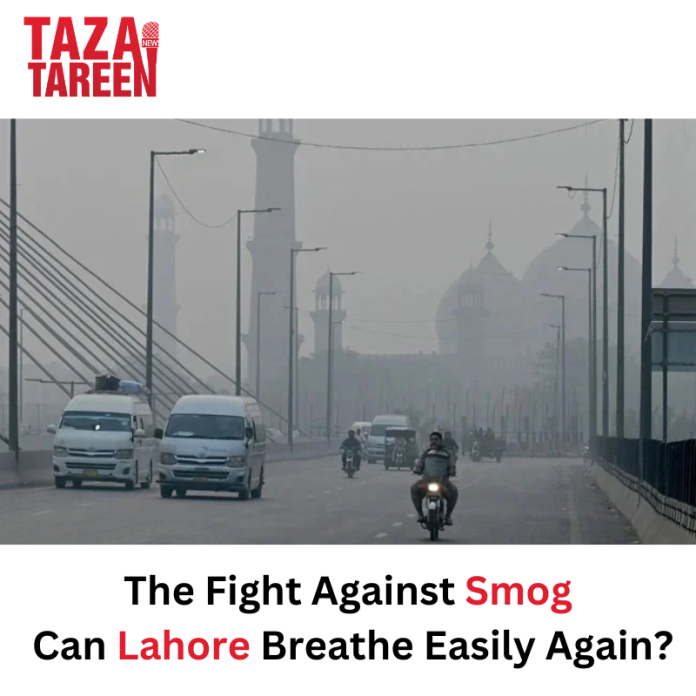Each year, as winter draws closer, the cultural capital of Pakistan, Lahore, is shrouded in smog. This is not just fog during the winter period but smoke and fumes polluted by fine particles. They are highly risky to human lives and the surroundings. Smog is a combination of smoke and fog. Pollution is the most emerging challenge that has affected millions of people in Lahore. This article discusses the causes, health effects, and prevention of smog experienced in Lahore.
What is Smog?
Smoke and fog are types of air pollution, smog is a form of air pollution that comprises many particulate matter pollutants such as nitrogen oxides, sulfur dioxide, volatile organic compounds, and fine particulate matter (PM2.5 and PM10). But they can form ground-level ozone only when mixed with sunlight — which harms our health and the environment. Smog has toxic particles that hang around the atmosphere, which isn’t good when it comes into contact with the lungs.
Current Situation in 2024
According to the latest report of AQI- Air Quality Index several cities of pakistan considered hazardous. Lahore consistently ranking among the most polluted cities in the world. AQI level in Lahore have exceeded to 400 indicating high health risk. Karachi and Islamabad have also seen increasing pollution, especially during winters due to the temperature inversion, which end up trapping pollutant near ground.
Major Causes of Smog in Pakistan:
The smog crisis in Lahore has its origin in industrial emissions vehicle exhaust and seasonal agricultural practices.
1. Industrial Emissions: Surrounding metropolitan Lahore lies several industrial zones, where factory exhaust combines grams lungful of sulfur dioxide, carbon monoxide, and other noxious gases, sometimes without pollution filters. There are no regulations in place that allow these pollutants to enter the atmosphere without consequence, as they do, and contribute to the city’s air pollution.
2. Traffic and Vehicle Emissions: Lahore’s population is growing rapidly and the infrastructure of public transportation is not sufficient due to which the number of vehicles on roads has increased. Carbon monoxide, nitrogen oxides, and hydrocarbons are emitted by these vehicles and these contribute considerably to the city’s smog.
3. Crop Residue Burning: The second main reason is the seasonal burning of crop residues in neighboring, including across India bordering areas.
4. Weather and Climate Conditions: The smog is helped to persist by Lahore’s geographical location and climate. However, a phenomenon known as thermal inversion traps pollutants close to the ground in winter. Pollutants sit over the city in a thick blanket of smog as cooler air near the surface tops off with warmer air above.
The government’s important work in enforcing regulations and solving long-term problems is critical. Residents help the air by reducing emissions, planting trees, using public transport, and spreading awareness.
This will not only address Lahore’s problem with its smog but will also help to improve public health. It reduces healthcare costs but also makes the city better placed for future generations to live in. Reaching smog-free Lahore is a difficult proposition but only with unity can we do it.
Let us know if you find this article helpful.


